
Whether you’re buying a present for an animal loving child or for your own little pet, we’ve got the perfect gifts, big and small. Check out these top tips, now at an amazing price in the Omlet Black Friday Sale!
Shelters and Play Tunnels
Give your rabbits or guinea pigs something fun to play with on their run this winter with Zippi Shelters and Play Tunnels. Available in green or purple, the shelters are a great way of providing a safe and secluded place for your pets to hide, or as a platform they can jump onto and watch the world go by.
The play tunnels can be placed independently anywhere on the run for your pets to chase each other through, or be connected to the shelters to create a maze that mimics their wild burrows. Entertainment and safe spot all in one!
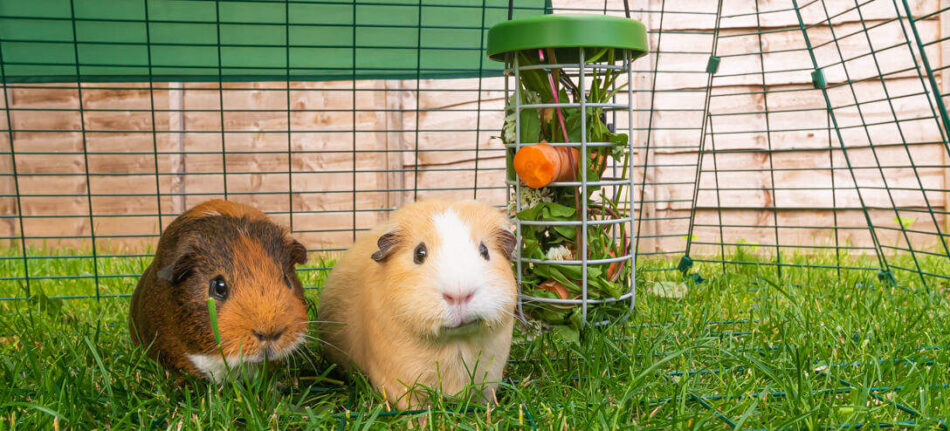
Caddi
The Caddi Treat Holder is the perfect stocking stuffer for chickens, rabbits or guinea pigs, or their owners. The Caddi can be filled with a range of pet appropriate treats, and will swing as the animals peck or bite the treats. It’s the ideal both mental and physical challenge, with the added bonus of a tasty reward!
Hung from the roof of your hutch and run, the height of the Caddi can easily be adjusted, and it’s super easy to remove it for refilling and cleaning.
Qute Hamster and Gerbil Cage
The Qute allows hamster and gerbil owners to get closer to their pets. The modern design means you will be happy to display the piece in your kitchen or living room, and the large, crystal clear bedding tray makes it easy for pet owners of all ages to see what their pets are up to. The bedding tray also offers a convenient way of getting your hamster or gerbils out of the cage for playing, socializing and exercise.
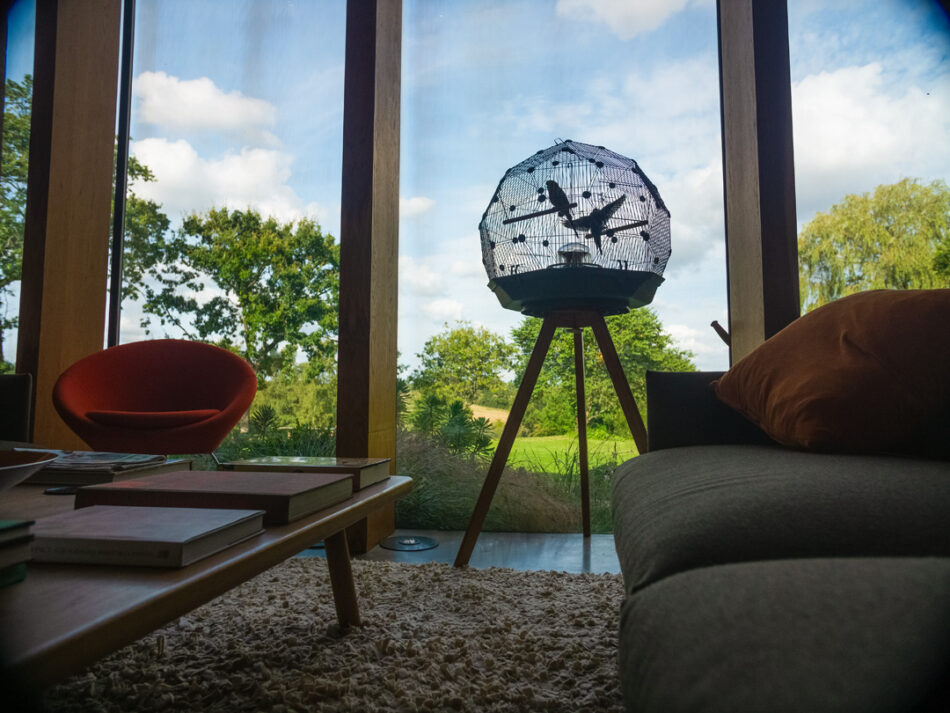
Geo Bird Cage
Upgrade your parakeet/budgie or other small birds’ home this winter with the stunning Geo Bird Cage. The Geo has got everything your bird needs to become a natural part of the home, and you can accessorize with baths, mirrors and toys for your pets to enjoy.
Eglu Go Hutch
Do your current pets need a home improvement? The Eglu Go Hutch is the perfect way of keeping rabbits or guinea pigs in the garden. The handy integrated hutch and run solution allows your pets to run in and out as and when they like during the day, and when it’s time for a nap they can curl up in the safe and insulated house. In winter you can move the hutch closer to the house, making cleaning and spending time with your pets even easier.
This entry was posted in Birds
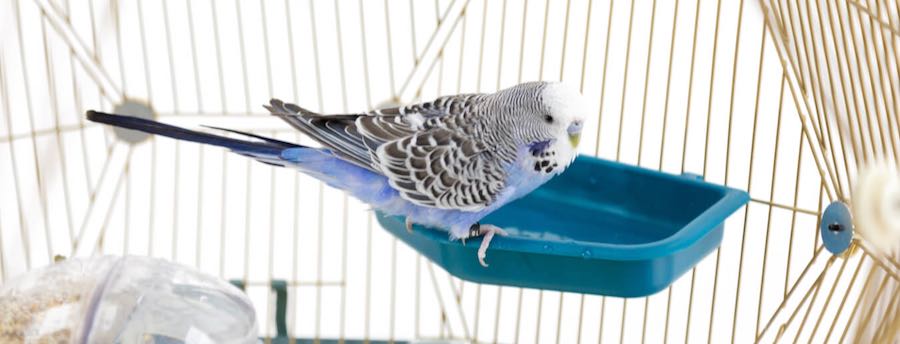
The starting point for all parakeet tricks is trust, and the key to success is treats! Once a parakeet has been hand-tamed and is happy to perch on your finger outside the cage, you can take it a step further and introduce some fun challenges. Make sure you have a sprig of millet or your pet’s favourite vegetable snack handy!
Snakes and Ladders
For this, you need a small raised platform, with a ladder leading on one side and a slide on the other.
The ‘ladder’ part of the trick is simple: place the parakeet at the foot of the ladder, and offer the treat at the top. As the bird climbs up, use a command such as ‘Up the ladder!’ After a while, you will be able to place the parakeet further from the foot of the ladder.
For the ‘snakes’ part of the trick, the parakeet will scoot down the slide, and once again the millet or other treat is the key. Place it at the foot of the slide, and be patient. It’s very likely that, being such a smart bird, the parakeet will fly to the treat without using the slide. If this happens, hide the treat, and start again.
The parakeet will soon realise that the slide is the key to the treat. Once the bird is on the slide, say ‘Down the snake!’ You can then extend the ladder and the ‘snake’, if you wish.
Parakeet Soccer
If you put a table tennis ball in your parakeet’s cage, the bird will soon be playing with it, ‘dribbling’ the ball with its beak. Outside the cage, this can be turned into a human-versus-parakeet soccer game. Gently roll the ball towards the parakeet, and the bird will instinctively ‘save’ the ball. Include a goal mouth, and your parakeet is transformed into a goalkeeper.
Set up another goal mouth a metre away from the parakeet, and see if the parakeet manages to score a goal as it taps the ball forward with its beak. Once the ball is between the goalposts, say something like ‘Goal!’, and offer a treat. The bird will soon learn to hone its beak-dribbling skills in order to score those treats!
The Great Escape
The aim here is to get your parakeet to negotiate a short tunnel. It won’t be tunnelling its way to freedom, though, just to a tasty treat!
To begin with, use a piece of cardboard with a large hole cut into it, or a large plastic ring. Call the parakeet, offering a treat on the other side of the hole. As the bird hops through, speak your chosen command words – something like ‘Let’s tunnel!’ Once the trick is going well, swap the hole for small sections of plastic or cardboard pipe, with a narrower hole/tunnel as time passes. Eventually, you will be able to call your parakeet to make his Great Escape through something with the thickness and length of a paper towel tube.
Fetch
This one takes a little time to get right, but once again the parakeet’s intelligence wins through in the end. The goal here is to teach your bird to pick up an object, bring it to you, and drop it into your hand.
To begin with, get the parakeet to perch on your hand, and offer a shiny object such as a button or paperclip. When the parakeet takes it in its beak, say ‘Fetch!’ When it drops the object, say ‘Drop it!’, and if it lands in your hand, offer a treat.
Once this has been mastered, place the object away from your hand, and say ‘Fetch!’ when the parakeet picks it up. Bring your hand close, ready to catch the object when it falls. Over time, this will develop into a routine in which the parakeet picks up an object, runs back with it, and places it in your hand for a treat.
The thing that all these tricks have in common is that the parakeet will love performing them. If they don’t want to take part, they won’t, simple as that. This means there’s no pressure, no forcing the issue. It’s just fun all the way, for parakeet and owner alike. Trust and treats – that’s the key!
This entry was posted in Parakeets
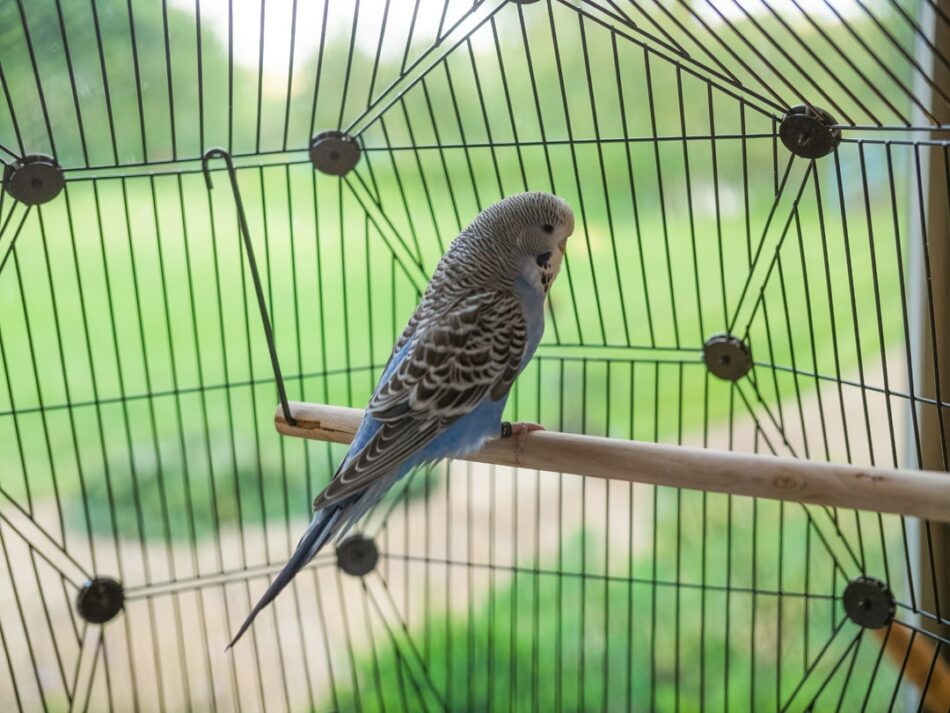
When you know how to care for a parakeet, they make wonderful pets. Not only will their beautiful plumage brighten up any room, but they’re also very intelligent and sociable — developing strong bonds with their owners. Like with all pets, however, they come with responsibilities, and it is now your job to make sure they stay healthy and happy.
Diet and basic needs
Your parakeets should consume the nutritional equivalent of what they would eat in the wild. The basis of their diet should be a good quality seed mix, and they should always have access to water and a cuttlefish bone. Offer leafy greens and herbs to provide vitamins and minerals a few times a week. Feed fruit as a treat no more than once a week, as these foods are high in sugar. Food and water containers must be refilled every day, and washed weekly.
Twice a year your parakeets will molt, which means their plumage will gradually fall out and grow back. To help them stay healthy during this time, it’s important that they get extra molting vitamins in their water.
Like most pets, parakeets appreciate routine. Try feeding and letting them out of their bird cage around the same time every day. If you choose to use a bird cage cover at night time, it’s best to do this every day. This way the parakeets will be able to anticipate the activity around them and feel comfortable in your presence – effectively minimizing stress and anxiety.
Enrichment and entertainment
Parakeets are very social pets, and it’s always best to keep them as a pair – preferably siblings of the same sex who are used to living together. If you just want one parakeet, you will need to act as its friend and companion, and can expect to spend a lot of time with them.
Most parakeets like to bathe in a bird bath. The main purpose of a bird bath is to clear dust and sand from their feathers and to cool off. Even if your parakeets don’t have these daily requirements, most parakeets enjoy splashing around in the water. If you don’t have a bird bath in their cage, you can put a bowl of water in the room where the parkaeets are given flight permissions. It’s important to change the water as soon as it gets dirty in any bird bath.
If your pet doesn’t seem interested in a bath, an alternative is a parakeet shower. Hang some wet leaves (lettuce, basil and parsley are favorites) in the cage, and watch your parakeet run through them.
Parakeets should be offered the opportunity to fly freely (but supervised) outside of their cage every day for at least 45 minutes. Ideally, parakeets should be able to have multiple hours outside of their cage. Make sure the room is parakeet-proofed before you let your pets out. Close windows and doors, block off fireplaces, turn off fans and air conditioners and keep other pets out of the room.
Check your cage
Check your parakeets’ cage weekly to see that everything is in place and nothing has broken. Perches must be kept clean and functional. Bird toys are great for mental stimulation, as they encourage physical exercise and help wear their ever-growing beaks down. Change up your parakeets’ toys every now and then to keep them interested. You don’t have to buy new toys all the time, but rotating through your parakeets’ toys with the occasional new toy will help add variety to their environment. Your parakeets’ environment is a crucial element in keeping them healthy and happy.
Health checks
Parakeets’ beaks and nails grow constantly throughout their lives, so it’s important that they have access to toys to grind them down. In most cases you will need to trim the nails when they get too long, so make sure to purchase a pair of clippers made specifically for this task.
Parakeets are very good at hiding pain and illness, and you’ll need to give them regular health checks. When you get to know your parakeet, it’ll be easier to recognize when they aren’t feeling their best.
Signs of illness in parakeets include:
- Changes in weight
- Discolored feathers
- Reduced interaction with humans and toys
- Crusty nostrils
- Loss of feathers around the eyes or face
Another way of spotting early signs of illness is to regularly check your parakeet’s droppings. The disposable paper liners in the Geo bird cage make it easy to monitor your pet’s health. When you do your weekly clean, check the amount, color, and texture of the droppings. They can vary somewhat depending on what your parakeet has been eating, but all feces should be firm, with the urea (liquid portion) transparent and clear. If you notice changes or have other reasons to suspect that your parakeet might be ill or in pain, contact your veterinarian. Make sure to find a vet that is experienced with birds – ideally before you bring your parakeet home so you know who to contact if something goes wrong.
Omlet and your parakeets
We’ve thoughtfully created the best bird cage for your parakeets. The Geo Bird Cage has everything you need to make caring for your parakeet easy, and to give them the perfect home. Customize their cage with bird mirrors and parakeet perches to give them exciting ways to entertain themselves inside of their home. And with an optional bird cage stand and customizable cage color options, your birds and their cage will both be a beautiful addition to any room.
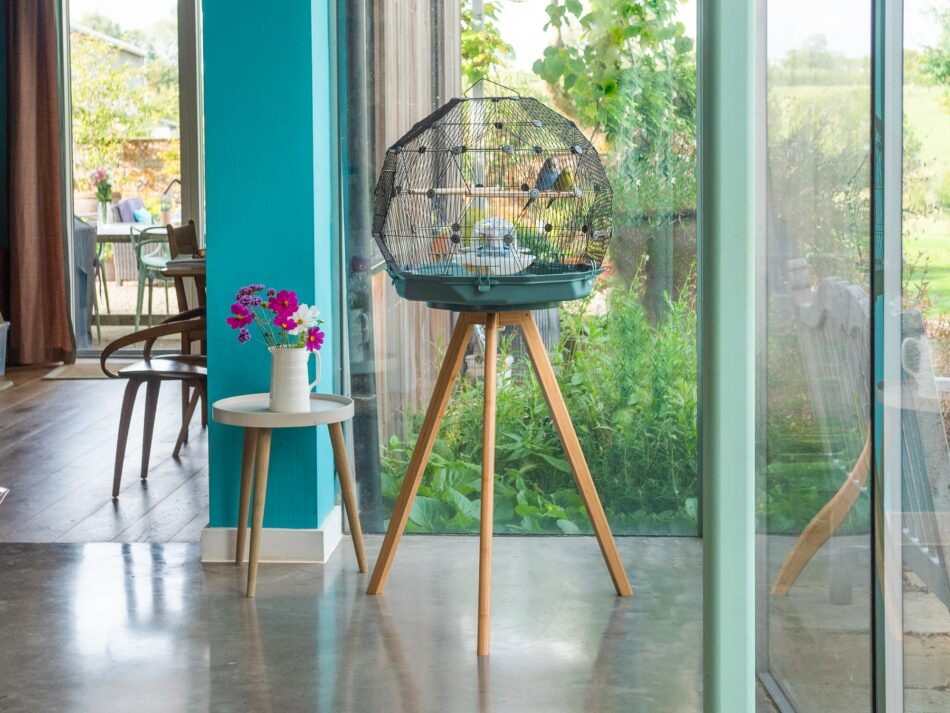
This entry was posted in Parakeets
What do you need from a bird cage?
The main thing is to give your parakeets and finches a space in which they can happily do what a bird has to do – eat, sleep, fly, perch, and chill out.
So, your check list might read something like this:
- Full flying access to the entire cage
- Fantastic feeding station
- Lots of perches and usable ‘corners’ for taking time out
- Easy access to and from the cage
- Fantastic design that makes it a standout feature in the room.
And that pretty much summarises the new Geo – the first great leap forward in cage design for 100 years.
The Geo Bird Cage for Parakeets, Finches and Canaries
Until the arrival of the Geo, bird cages hadn’t changed much since the early 20th century.
But why did we need another innovation in cage design, you may ask? For the simple reason that when keeping a pet, its welfare and happiness are the top priorities.
So, with this in mind, could the old, rectangular-type standard bird cage be improved upon?
The answer is yes – and then some!
The unique geodesic-dome shape of the Geo, and its central feeding station, are the stand-out features. To explain how we got there, let’s take a brief sprint through previous approaches to cage design.
Bird Cages – from Small Cells to Big Sales
Bird cages have a long history, and their basic shape and function has evolved over the years.

In the beginning a cage was simply a cell in which the feathered inmate – usually a finch, bunting or starling – was expected to sing its little heart out. These small cages were made from wicker or other light, pliable wood. By the 1830s cages were being made from metal and wire. The basic design remained bell-shaped (the kind of thing seen in Tweety Pie cartoons).
This design lingered into the later 19th century when keeping birds as pets underwent a huge surge in popularity, with parakeets becoming the pet bird of choice for many. The cages were often ornate, but the emphasis was on decoration, rather than keeping the birds happy. These cages were all height and no width, usually.
By the early 20th century, rectangular, wider bird cages were mass produced – the kinds of things still sold as the standard finch or parakeets cage in most pet shops. Design was, at last, part of the overall concept – seed trays that slot into the cage sides, water bottles that attach via clips, better, wider doors, removable bases for easy cleaning.
With a wide range of cage sizes, it meant you could ensure that the dimensions were right for the number of birds you owned. So what was left improve – why do we need the Geo?
Why the Geo Cage is Better for Pet Birds
The geodesic dome shape of the Geo cage provides the ideal dimensions for birds to move around in. When flapping and flying in a rectangular cage, birds don’t have much front-to-back space – the flying area is limited to the length of the cage. Also, birds cannot negotiate 90 degree corners: these are dead space when it comes to flying.
So, if you were to map the total usable flying area, you might be surprised to find that in a standard rectangular cage of 90x60x40cm (220,000 cubic centimetres) a parakeet or finch can only make use of one tenth of the area for flying.
In contrast, the Geo’s 62x60x60cm (223,200 cubic centimetres) is nearly ALL flying space. There are no front-to-back limited space issues, and no right-angled corners to prevent a bird stretching its wings.
Birds are happier if they can fly outside the cage
In any indoor cage, a bird is only able to fly in a limited space. All pet birds should be allowed to free-fly in the room in a safe manner.
The Geo makes free-flying a breeze – it has two wide doors allowing your birds easy access to and from the cage.
Cutting Corners
Do birds need corners to hide in if they’re startled or afraid of something?
Yes and no. It’s more about the position of the cage. If the birds are in the middle of a room completely surrounded by activity they will have nowhere to hide if they’re feeling nervous. That’s why a cage – including the Geo – should be close to a wall or a corner of the room if possible.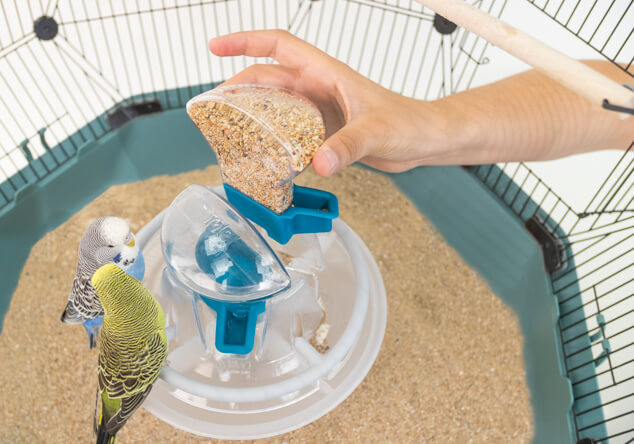
Also, the Geo does have corners – lots and lots of them, just not the right-angled corners of a standard cage. You’ll still find your birds using these multiple corners to rest and take stock.
Looking good, feeling good
The Geo’s marriage of great looks and ultimate bird-friendly design set it apart from anything else available.
One of the most eye-catching features is its central feeding station. It’s a joy to watch birds gather together and feed, and the Geo has an extra bonus in that most of the discarded husks and dropped seeds fall into the feeding station’s hopper for easy cleaning.
The rounded shape of the Geo – not circular, but a collection of many flat sides – makes it a striking feature in the room. But, most importantly, it’s a striking feature that doubles as the perfect environment for your pet parakeets and inches.
This entry was posted in Parakeets
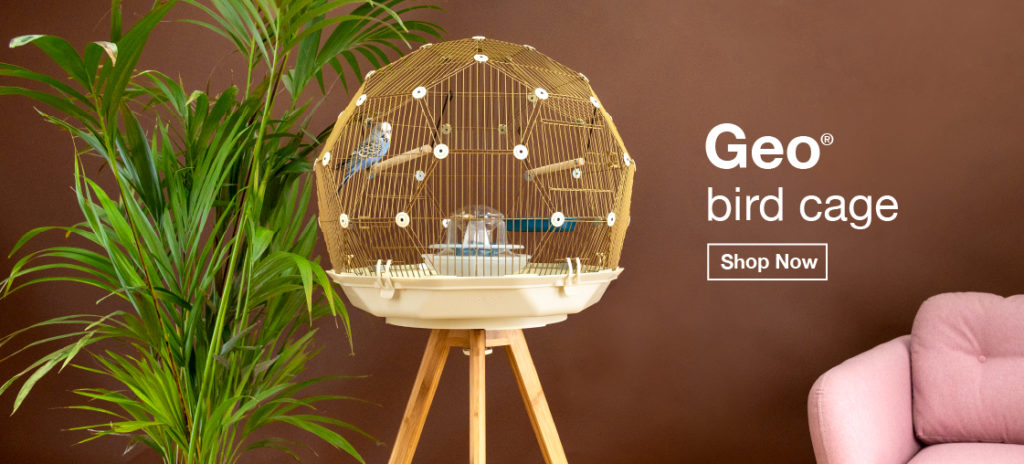
Finally there is a parakeet cage as good looking as the parakeets
The revolutionary NEW Geo Bird Cage from Omlet is a breathtaking, contemporary design that redefines what a pet bird’s habitat can and should be. The geodesic shape defines a light and spacious habitat for your birds, creating the perfect environment to reveal their natural beauty.
Rigorous design and testing have refined the Geo Bird Cage into a final form that has nothing superfluous but leaves nothing out.
Simon Nicholls, Omlet’s Head of Design said “The inspiration for the Geo Bird Cage came from a really amazing polymath called Buckminster Fuller, who pioneered geodesic domes in the 50’s. Once we had the form we developed over 60 prototypes to ensure that every aspect was optimised for both the bird and the owner. I couldn’t be prouder of the finished product.”
A good example of the care and attention to detail throughout the Geo is the central feeder. A delight for both owner and parakeet to use, it’s also a remarkable piece of engineering. It intelligently catches any dropped husks and seeds in a hopper making this the cleanest bird cage of its kind.
Pet birds are the 4th most popular pet in US households according to recent reports. Parakeets have long been a favourite with children, parents and grandparents as they enjoy human company and can be easily trained to land on your hand and can even learn to speak. With Omlet’s latest innovation, keeping parakeets is easier, cleaner and better looking than ever before!
Available in a choice of teal and cream base colours, and black, white or gold mesh, the Geo Bird Cage can be further customised with or without the stand. Made from solid bamboo, the stand elevates your Geo Bird Cage and makes it easier for you to interact with your pets. No other small bird cage creates such a captivating centrepiece for your home.
The Constellation Geo Bird Cage Cover is typical of the kind of thoughtful touches pet owners have come to expect from Omlet. Decorated on the inside with a map of the stars, when it’s placed over the Geo at night, the birds can try to spot Orion, Ursa Major and maybe even a shooting star before they nod off to sleep!
The Geo Bird Cage is available exclusively at Omlet, from $107!
This entry was posted in Parakeets
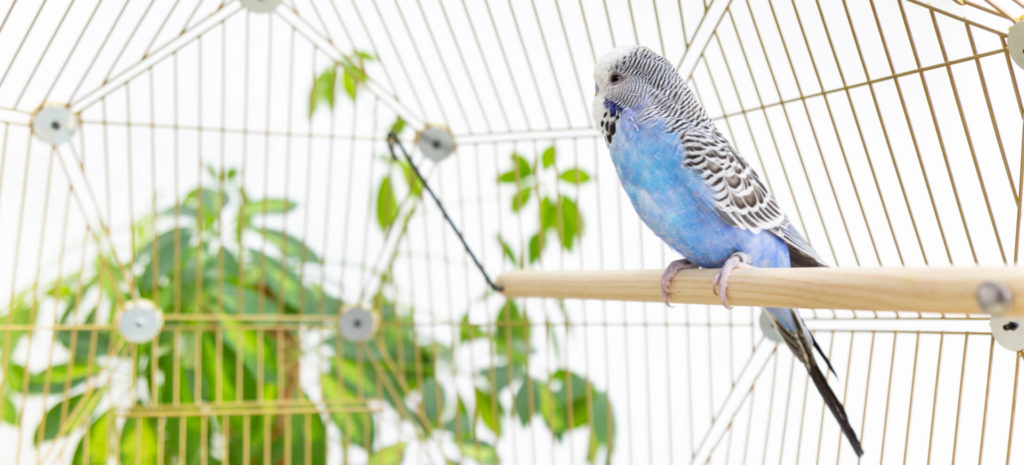
The Omlet Geo bird cage is a beautiful, contemporary habitat for parakeets.
The parakeet is the world’s most popular pet bird. When the first specimens were brought to Europe from Australia in the 1840s they were an instant hit. The reasons for their popularity are clear to anyone who has spent time in the company of these wonderful little birds. They are pocket-sized parrots, with all the personality of their bigger cousins – clever, colorful, and with the seemingly magical ability to learn human words… sometimes!
1. Parakeets don’t require much
Budgerigars are also easy to look after, and being small birds they have modest appetites, so they’re an inexpensive addition to the home. Their diet is based on seed, and as long as you source a good mix, without added colors or chemicals, the birds will thrive. They will also enjoy some fresh greens and other vegetables, but only in small quantities.
This reflects the birds diet in the wilds of Australia. They gather in large feeding flocks and seek out grass seeds. Most of these are fresh, of course, and in captivity the seed should be as fresh as possible too.
In terms of equipment, a good cage and basic accessories are all you need. You can give them simple things to play with, too, like ping-pong balls and bells. All very cheap, and incredibly cheerful.
2. Parkeets Have Fantastic Personalities
Beautiful as a pet canary or finch may be, you can’t train them beyond the basic perching-on-a-finger level. Parakeets, however, can take on board an amazing variety of skills, from coming to your hand when you call, to negotiating tunnels, skateboarding, and maneuvering a ball around obstacles.
The key to these skills lies in bonding with your bird. It’s more than simply taming – it’s a human and bird friendship, the kind of connection you can only form with an intelligent animal. Parakeets are not alone in this, of course – the whole parrot family is renowned for its grey matter. But in a bird as small as a parakeet, intelligence appears even more remarkable.
3. Parakeets Can Talk To You!
Parakeets talk, pretty much all day, with various moods that you soon come to recognize. Not all the ‘talking’ consists of recognizable words – in fact many, if not most birds, never master human words. But it doesn’t really matter. It’s great fun if your bird takes on board a few words and phrases, but even without them parakeet sounds are a source of great pleasure.
Female parakeets are less inclined to speak than males. Of these, around half may pick up human words. They have more chance of learning if you start teaching them in their first nine months. Some require lots of time and effort, while others seem to soak up words with relative ease. Talk-time tends to be after a good feed or a spot of exercise. The parakeet will settle on his favourite perch and begin to chatter. The bubbling, clicking, whistling babble of speech sounds voice-like even when there are no human words in the mix. It’s a lovely, soothing backdrop to the day.
4. Parakeets Don’t Like Vets!
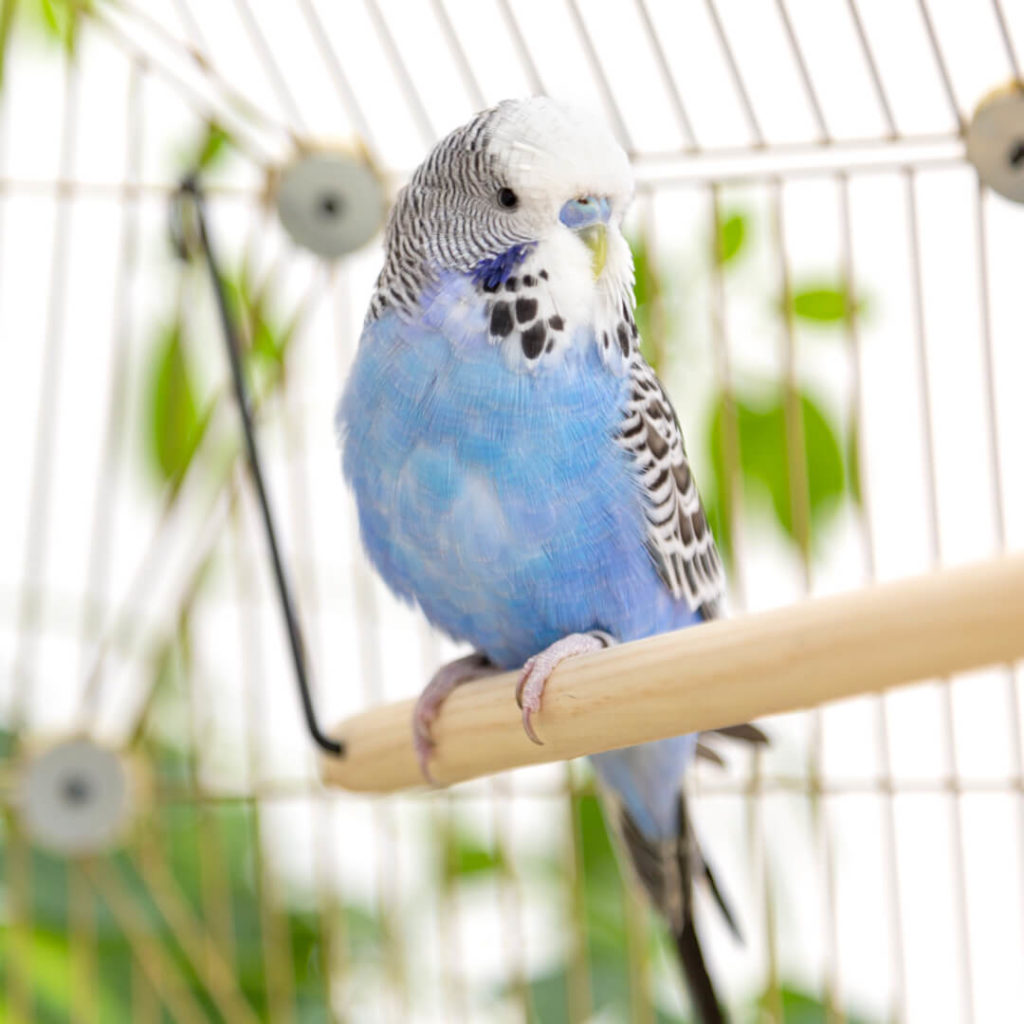
The Omlet Geo bird cage is available in a choice of teal and cream base colors and black, white and gold mesh.
In other words, budgerigars are generally very healthy and robust birds. As long as they have a super-healthy diet and a clean environment (cages should be spruced-up once a fortnight), they will be strangers to the vet.
Parakeets also let you know on those rare occasions when they’re not feeling well. They will stop chattering non-stop, will sleep during the day, and will look sad and ‘droopy’ on their perch. Because, of course, there are potential illnesses, as there are with any animal. Give them a daily visual check – if they’re looking as happy and chirpy as usual, all is well. If you have any doubts, have a word with a vet. Chances are they will never have met your bird before!
5. Parakeets Come in Endless Color Patterns
Although there are just three basic color combinations – green and yellow, blue and white, or a mixture of these – the variety of patterns within this mix is incredible. In some birds the white dominates, with other colors bursting through like flowers in a snowy meadow. Some birds have striking primary colors, while others have pastels, sometimes fading to just a hint of translucent color. There are all-yellow parakeets, all-white ones, birds patterned in just greys and blacks, and, of course, classic green and yellow parakeets looking exactly like their Australian wild cousins.
Whichever variety of parakeet you bring home, you are guaranteed a bird packed with enough personality to fill a dozen birds twice its size. And this will be a long-lasting friendship, as a healthy and well fed parakeet can live up to 15 years. Enjoy your time together!
This entry was posted in Parakeets










